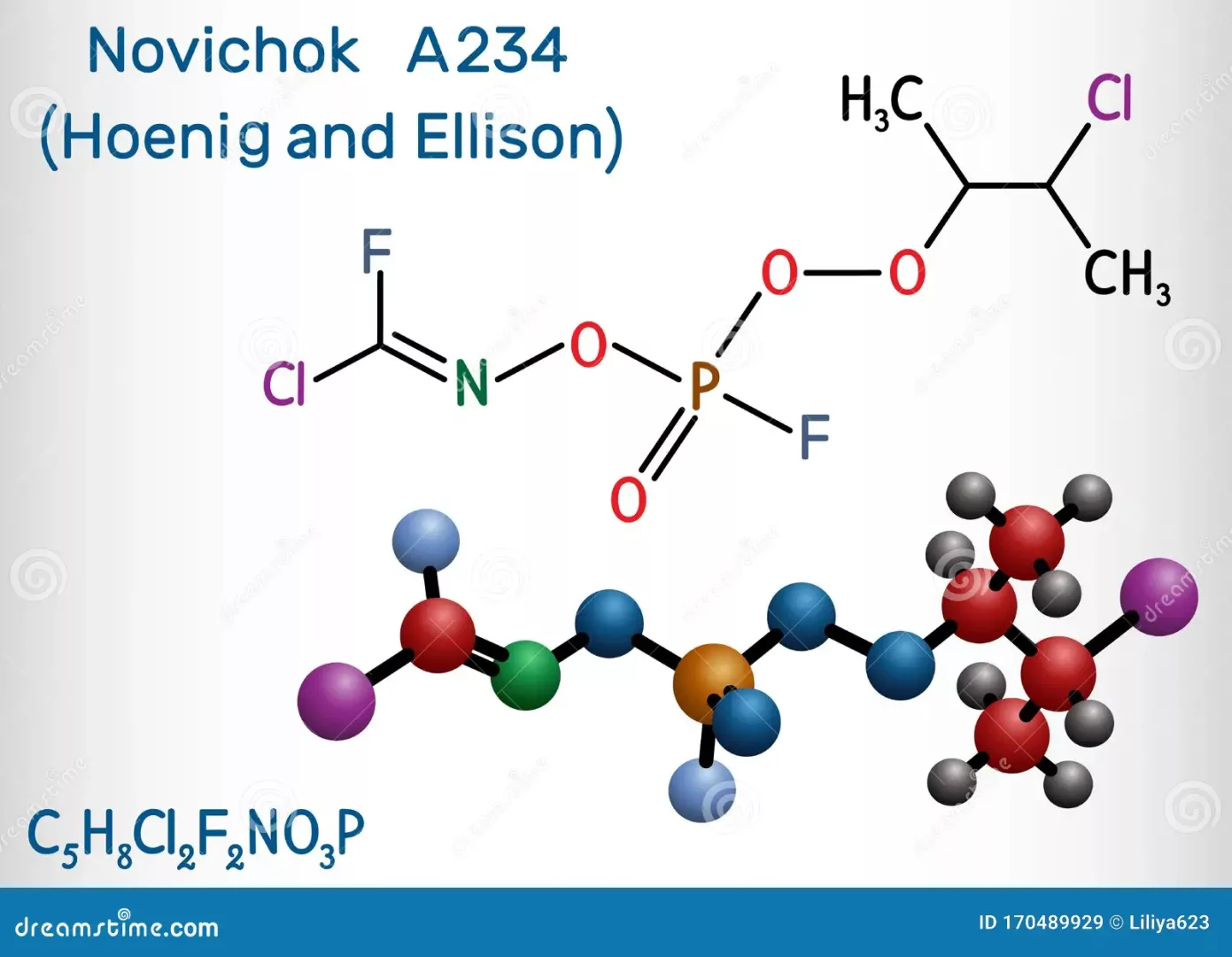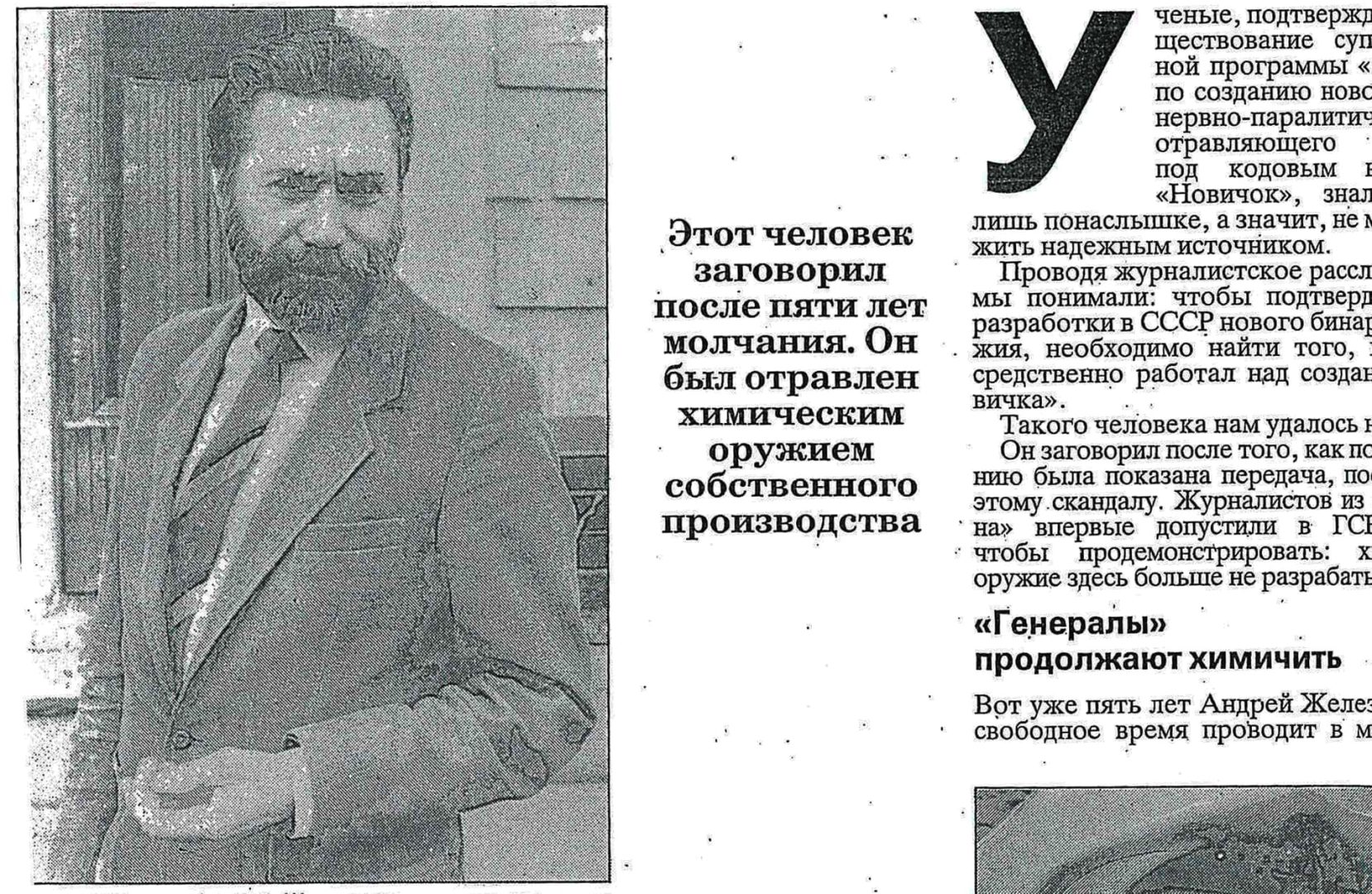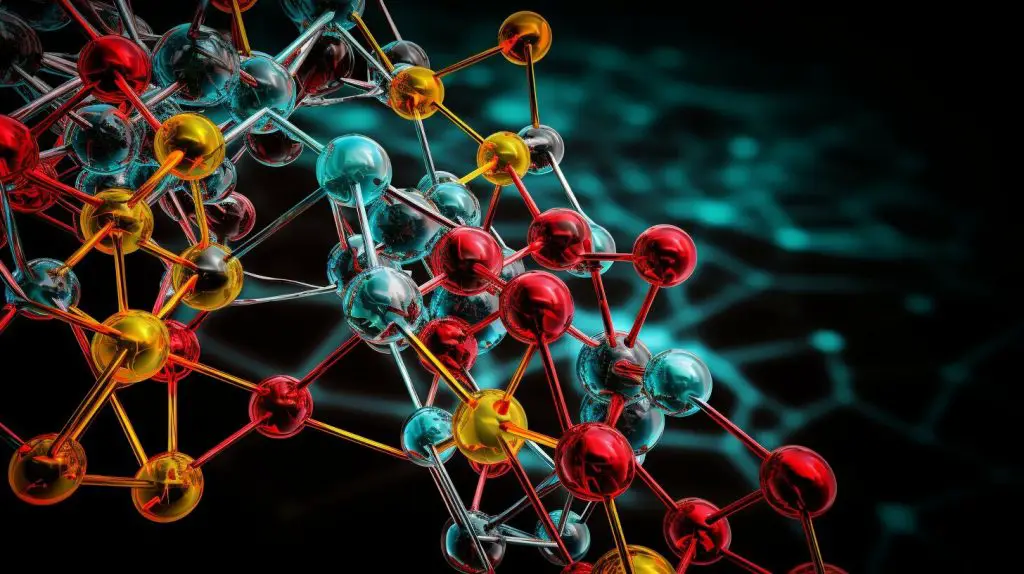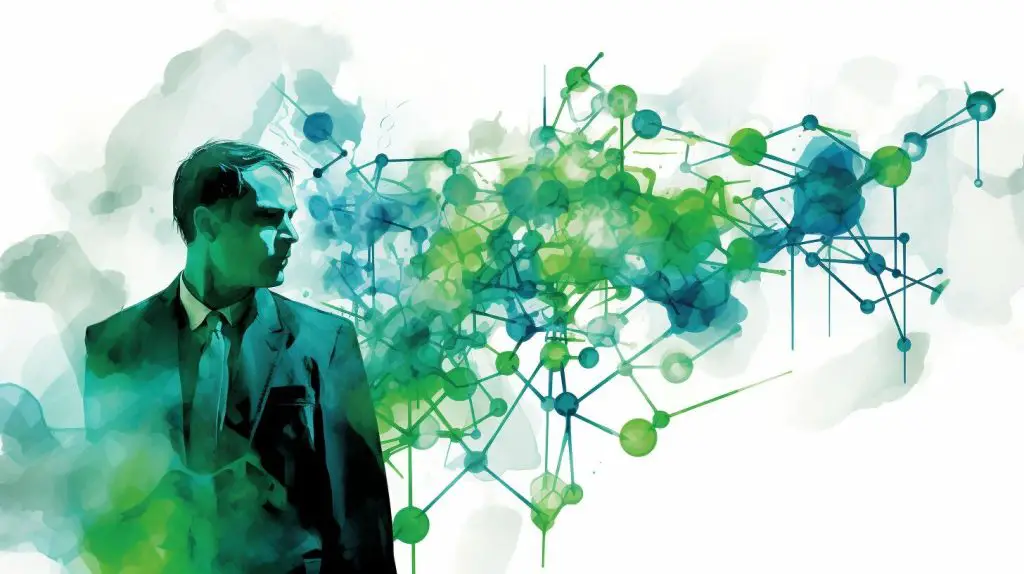Exploring What We Do (and Don’t) Know About Novichok Agents

Novichok agents have recently gained global attention due to their involvement in the poisoning of former Russian spy Sergei Skripal and his daughter Yulia. In this article, we will delve into the realm of chemical weaponry and explore what we currently understand, and what remains a mystery, about Novichok agents.
Key Takeaways:
- Novichok agents are organophosphate nerve agents similar to VX and sarin.
- Our knowledge about Novichok agents comes from former Russian chemical weapons scientist, Vil Mirzayanov.
- The chemical structures of Novichok agents remain unclear, with different proposed structures.
- Novichok agents are binary compounds, formed by the combination of two safer-to-handle compounds.
- They are reported to be up to ten times more lethal than VX.
- Novichok poisoning can lead to a range of symptoms and long-term neurological damage.
- Antidotes and treatments for Novichok poisoning exist but their effectiveness against Novichok agents is uncertain.
- Previous cases of Novichok poisoning have resulted in long-term health consequences for survivors.
- Novichok agents can persist in the environment, posing a risk of secondary contact.
- Ongoing research is needed to fill the knowledge gaps surrounding Novichok agents.
What are Novichok Agents?
Novichok agents are a group of organophosphate nerve agents that have gained notoriety in recent years for their deadly potential in chemical warfare. The term “Novichok” loosely translates to “newcomer” in Russian, indicating their status as relatively new agents.
Chemically, Novichok agents are similar to other organophosphate agents such as the V series, which includes VX, and the G series, which includes sarin. These agents work by inhibiting the breakdown of acetylcholine, a neurotransmitter responsible for various bodily functions.
The exact chemical structures of Novichok agents remain unclear. While some suggested structures have been proposed in books and journals, they differ from what former Russian chemical weapons scientist Vil Mirzayanov claims represent typical Novichok agents. In his autobiography, Mirzayanov suggested that the structures of the less potent compounds were openly reported as organophosphate insecticides to cover for the chemical weapons program.
Novichok agents are believed to be binary compounds, which means they can be formed by the combination of two different compounds that are safer to handle. This property allows for the production of these agents on demand. However, the exact precursor compounds used in the synthesis of Novichok agents are not known.

What We Know About Novichok Agents
Our understanding of Novichok agents largely stems from the disclosures made by Vil Mirzayanov, a former Russian chemical weapons scientist, who provided insights into the development of nerve agents, including Novichok. In 1992, Mirzayanov and his colleague Lev Fedorov published an article in a Russian newspaper, detailing aspects of Russia’s nerve agent program despite the impending signing of the Chemical Weapons Treaty. They revealed that Novichok agents were developed from the 1970s to the early 1990s.
The chemical structures of Novichok agents remain shrouded in mystery. While some suggested structures have been proposed in books and journals, they differ from the structures claimed by Mirzayanov. In his autobiography, Mirzayanov published a series of structures and stated that there were many more compounds produced. The less potent compounds were reported as organophosphate insecticides to cover up the true nature of the chemical weapons program. Mirzayanov also asserted that Novichok agents are binary compounds, meaning they can be formed by the combination of two different compounds that are safer to handle.
The exact precursor compounds used in the production of Novichok agents are unknown. However, it is reported that some Novichok agents can be up to ten times more lethal than VX, another deadly nerve agent. VX has the potential to kill if a person’s skin is exposed to just ten milligrams. The lethal nature of Novichok agents highlights the grave threat they pose in chemical warfare scenarios.

Table: Reported Lethality of Novichok Agents Compared to VX
| Agent | Lethality |
|---|---|
| Novichok | Up to ten times more lethal than VX |
| VX | Can kill with exposure to just ten milligrams |
“The lethal nature of Novichok agents highlights the grave threat they pose in chemical warfare scenarios.”
Due to the lack of specific toxicology data on Novichok agents, the exact effects of poisoning with these nerve agents are difficult to determine. However, exposure to nerve agents, including Novichok, can lead to a range of symptoms, starting with runny nose, excess salivation, sweating, and contracted pupils. These initial symptoms quickly escalate to more severe effects, such as chest constriction, difficulty breathing, nausea, vomiting, and loss of bowel control. The progression may culminate in spasm, convulsions, coma, and death due to respiratory failure. Even those who survive nerve agent poisoning can suffer long-term neurological damage.
Antidotes and treatments for Novichok poisoning exist, including compounds that block acetylcholine receptors like atropine. Other compounds called oximes can also be used alongside atropine to restore the enzyme responsible for breaking down acetylcholine. However, the efficacy of these antidotes against Novichok agents is not well understood.
Previous cases of Novichok poisoning have revealed the potential for long-term health consequences in survivors. For instance, Vil Mirzayanov recounted the case of his colleague, Andrei Zheleznyakov, who suffered ongoing health issues, including depression, epilepsy, and liver problems, after accidentally being poisoned by a Novichok agent. The persistence of Novichok agents in the environment also raises concerns about secondary contact and the risk it poses to bystanders and rescuers.
As ongoing research continues to shed light on Novichok agents, our understanding of these deadly nerve agents will become more comprehensive. The investigation into the poisoning of Sergei Skripal and his daughter in the UK serves as a reminder of the urgent need to uncover the full extent of knowledge surrounding Novichok agents and develop effective countermeasures to protect against their use in chemical warfare.
Chemical Structures of Novichok Agents
The exact chemical structures of Novichok agents remain elusive, with various proposed structures differing from those suggested by Vil Mirzayanov, the former Russian scientist who exposed their existence. According to Mirzayanov, Novichok agents are binary compounds, meaning they can be formed by combining two different, safer-to-handle compounds. These binary compounds make it possible to produce Novichok agents on demand. However, the specific precursor compounds used in the production of Novichok agents are not known.
In his autobiography published in 2008, Mirzayanov provided a series of structures that he claimed represent typical Novichok agents. These structures differed from the speculated structures that have appeared in books and journals. Mirzayanov also suggested that there were many more compounds produced, and the structures of the less potent compounds were openly reported as organophosphate insecticides to mask the chemical weapons program.
“The exact chemical structures of Novichok agents remain elusive.”
It is worth noting that some Russian sources have refuted the claim that Novichok agents are synthesized from binary precursors. The debate around the exact chemical structures of Novichok agents underscores the ongoing research and knowledge gaps surrounding these deadly nerve agents.
Table: Proposed Chemical Structures of Novichok Agents

The table above demonstrates the variations in the proposed chemical structures of Novichok agents. The structures suggested by Vil Mirzayanov in his autobiography differ from the structures speculated in other sources, highlighting the ongoing debate and uncertainty surrounding the specific chemical makeup of these dangerous nerve agents.
Production and Lethality of Novichok Agents
Novichok agents are produced using a binary process involving the combination of two compounds, but the specific precursor compounds used are unknown, adding to the mystery surrounding their production. The exact structures of Novichok agents remain unclear, with different proposed structures circulating in books and journals. Former Russian chemical weapons scientist Vil Mirzayanov revealed in 1992 that Novichok agents were developed from the 1970s to the 1990s, but the details of their production methods are scarce.
These agents are reported to be up to ten times more lethal than VX, another deadly nerve agent. VX is so potent that 10 milligrams of exposure through the skin can be fatal. However, since specific toxicology data for Novichok agents is unavailable, the exact level of their lethality is unknown.
Comparison to VX
Novichok agents are believed to be more lethal than VX, a nerve agent which has been widely studied. VX is recognized as one of the most toxic chemical warfare agents, and Novichok agents are reported to be even deadlier. The comparison between these two nerve agents highlights the severity and danger posed by Novichok agents.
“Novichok agents are reportedly up to ten times more lethal than VX, another deadly nerve agent.”
| Nerve Agent | Lethal Dose for Skin Exposure |
|---|---|
| Novichok Agents | Unknown |
| VX | 10 milligrams |
It is important to note that these comparisons are based on available information and may not represent the full extent of Novichok agents’ lethality.
Effects of Novichok Poisoning
Novichok poisoning can lead to a range of symptoms, from initial mild effects such as excess salivation and sweating to more severe consequences such as convulsions, coma, and even death. The Novichok agents, classified as organophosphate nerve agents, act by inhibiting the breakdown of the neurotransmitter acetylcholine, leading to an increase in its concentration and subsequent activity in the body. This excessive stimulation of acetylcholine can result in a variety of symptoms that affect the autonomic and somatic nervous systems, including obstruction of the airway, fatigue and paralysis of muscles, and loss of bodily functions.
In a case of Novichok poisoning, the symptoms escalate rapidly, with constriction of the chest, difficulties in breathing, nausea and vomiting, and loss of bowel control. This progressive loss of body function can lead to spasm, convulsions, and potentially coma, ultimately resulting in death due to respiratory failure. It is important to note that even survivors of Novichok poisoning may experience long-term neurological damage.
While specific toxicology data on Novichok agents is limited, it is reported that some of these agents can be up to ten times more lethal than VX, another deadly nerve agent. VX, which can cause death from exposure to just ten milligrams on the skin, serves as a benchmark for understanding the potential lethality of Novichok agents.
The exact efficacy of antidotes and treatment options for Novichok poisoning is still uncertain. Compounds that block acetylcholine receptors, such as atropine, are commonly used as part of antidotes for nerve agent poisoning. Additionally, oximes, a family of compounds that restore the enzyme responsible for breaking down acetylcholine, may be used in conjunction with atropine. However, the effectiveness of these antidotes against Novichok agents remains unknown and requires further research.

Antidotes and Treatment for Novichok Poisoning
While antidotes exist for nerve agents like Novichok, their effectiveness against these specific agents is still uncertain, highlighting the challenges in treating Novichok poisoning. Novichok agents, including A-232 and VR, are classified as organophosphate nerve agents and have been reported to be up to ten times more lethal than VX, another deadly nerve agent.
Compounds that block acetylcholine receptors, such as atropine, are commonly used as a component of antidotes to mitigate nerve agent poisoning. These compounds work by blocking the activity of acetylcholine, the neurotransmitter responsible for transmitting signals between nerve cells. Additionally, oximes, a group of compounds that restore the enzyme responsible for breaking down acetylcholine to working order, may be used in conjunction with atropine. However, the effectiveness of these antidotes against Novichok agents is not well known.
The exact method of administration and dosing for these antidotes in cases of Novichok poisoning is uncertain due to limited data and the unique properties of these agents. Additionally, it is crucial for healthcare professionals to exercise caution and follow strict decontamination protocols when treating individuals exposed to Novichok agents to prevent secondary contact and potential harm to themselves.
Table: Antidotes and Treatment for Novichok Poisoning
| Antidotes | Treatment |
|---|---|
| Atropine | Blocks acetylcholine receptors to mitigate nerve agent poisoning |
| Oximes | Restores the enzyme responsible for breaking down acetylcholine to working order; may be used in conjunction with atropine |
In conclusion, while there are antidotes available for nerve agents like Novichok, their effectiveness against these specific agents is still uncertain. The challenge lies in understanding the unique properties of Novichok agents and developing targeted treatment strategies to counteract their toxicity. Ongoing research and collaboration between scientists and medical professionals are crucial in improving our understanding and treatment options for Novichok poisoning.
Previous Cases and Health Consequences
Previous instances of Novichok poisoning have indicated that survivors may experience ongoing health problems, including depression, epilepsy, and liver issues, emphasizing the severe and lasting impact of exposure to these nerve agents.
One such case involved Dr. Andrei Zheleznyakov, a colleague of former Soviet chemist Vil Mirzayanov. Dr. Zheleznyakov was accidentally poisoned by a Novichok agent and, despite receiving an antidote, suffered from depression, epilepsy, and liver problems until his death five years later.
It is important to note that scientific studies on the long-term health consequences of Novichok exposure are scarce, but these previous cases highlight the potential for significant and lasting health issues. The exact mechanisms by which Novichok agents cause these complications are still being investigated.
Table: Previous Cases of Novichok Poisoning
| Victim | Consequences |
|---|---|
| Sergei Skripal and Yulia Skripal | Remain critically ill; long-term health consequences unknown |
| Andrei Zheleznyakov | Suffered from depression, epilepsy, and liver problems |
| Unnamed policeman | Became seriously ill; specific health issues undisclosed |

While more research is needed to fully understand the health implications of Novichok exposure, these cases serve as a stark reminder of the potential dangers posed by these nerve agents and the need for continued vigilance in handling and treating such incidents.
Image:
Environmental Persistence and Secondary Contact
Novichok agents can persist in the environment for a limited period, raising concerns about secondary contact and the need for strict precautions to prevent further casualties. These deadly nerve agents, which are acetylcholinesterase inhibitors, pose a significant risk due to their high toxicity and rapid effects. In the case of Novichok poisoning, symptoms can manifest within 30 seconds to 2 minutes of exposure.
It is important to note that Novichok agents are believed to be predominantly transmitted through inhalation, although absorption through the skin or mucous membranes is also possible. Dermal exposure typically takes longer to reach toxic levels as the skin acts as a natural barrier. However, there is some speculation that the agents could also be consumed, further complicating the exact route of exposure.
In the context of the recent poisoning incidents, it is crucial to prevent secondary contact with Novichok agents. Bystanders and rescuers must exercise extreme caution and follow stringent safety protocols to avoid becoming additional casualties. Even trace contaminants pose a risk, as evidenced by the serious illness of a policeman involved in the Sergei and Julia Skripal case. Public Health England has issued warnings and emphasized the need for comprehensive measures to minimize the potential for secondary contact.
Novichok agents can persist in the environment for a limited period, raising concerns about secondary contact and the need for strict precautions to prevent further casualties.
While the exact duration of environmental persistence of Novichok agents is not well determined, it is imperative to acknowledge the potential risks and take appropriate action to mitigate them. The complex nature of these nerve agents, coupled with their high lethality and ability to cause irreversible damage to the human body, makes safety precautions of paramount importance.
As ongoing investigations continue to shed light on the properties and effects of Novichok agents, it is essential to remain vigilant and update safety protocols accordingly. By prioritizing the prevention of secondary contact and conducting thorough decontamination procedures, we can effectively minimize the potential impact of these hazardous substances.
Conclusion
In conclusion, while some information has been revealed about Novichok agents, there are still significant gaps in our understanding, highlighting the need for continued research and investigation into these potent chemical weapons.
Novichok agents, classified as organophosphate nerve agents, have been shrouded in secrecy since their development by the Soviet Union. Vil Mirzayanov, a former Russian chemical weapons scientist, played a crucial role in divulging information about these agents, shedding light on their development and the existence of an extensive chemical weapons program.
However, the chemical structures of Novichok agents remain unclear, with speculation and differing claims regarding their composition. Mirzayanov’s published structures differ from other suggested structures, adding to the mystery surrounding these deadly substances.
Production methods of Novichok agents also remain ambiguous, although it is believed that they are binary compounds, created by combining two different compounds. The exact precursor compounds used in their production have not been disclosed.
As for their lethality, reports indicate that some Novichok agents may be up to ten times more deadly than VX, another notorious nerve agent. The symptoms of Novichok poisoning can be severe, starting with mild symptoms such as excess salivation and sweating, and escalating to respiratory failure, convulsions, and potential long-term neurological damage.
Treatment for Novichok poisoning relies on compounds that block acetylcholine receptors, such as atropine and oximes. However, the effectiveness of these antidotes against Novichok agents is still uncertain.
Previous cases of Novichok poisoning have shown the potential for long-term health consequences. Survivors may suffer from depression, epilepsy, liver problems, and other ailments.
Another concern is the environmental persistence of Novichok agents, which can pose a risk to bystanders and rescuers in the toxic zone. Secondary contact with these agents must be avoided to prevent further casualties.
In conclusion, the knowledge gaps surrounding Novichok agents highlight the ongoing need for research and investigation. Continued efforts to understand these deadly nerve agents will contribute to better detection, protection, and response in the face of chemical weapon threats.
FAQ
Q: What are Novichok agents?
A: Novichok agents are organophosphate nerve agents that are similar to other agents like VX and sarin. They were developed by Russia in an attempt to circumvent the Chemical Weapons Convention.
Q: What is known about Novichok agents?
A: Much of what is known about Novichok agents comes from the revelations of Vil Mirzayanov, a former Russian chemical weapons scientist. He disclosed information about their development and their use as nerve agents.
Q: What is the chemical structure of Novichok agents?
A: The exact chemical structures of Novichok agents remain unclear. Vil Mirzayanov published a series of structures in his autobiography, but there are differing opinions on the accuracy of these structures.
Q: How are Novichok agents produced?
A: Novichok agents are believed to be binary compounds, which means they can be formed by combining two different compounds that are safer to handle. The exact precursor compounds used in their production are not known.
Q: How lethal are Novichok agents?
A: Novichok agents are reported to be up to ten times more lethal than VX, another deadly nerve agent. Just ten milligrams of VX can be lethal if it comes into contact with a person’s skin.
Q: What are the effects of Novichok poisoning?
A: Novichok poisoning can initially cause symptoms like a runny nose, excess salivation, sweating, and contracted pupils. These symptoms escalate to chest constriction, difficulty breathing, nausea, vomiting, loss of bowel control, and eventually spasm, convulsions, and respiratory failure. Survivors can suffer from neurological damage.
Q: Are there antidotes for Novichok agents?
A: Antidotes for Novichok agents do exist, such as compounds that block acetylcholine receptors and drugs like atropine. However, the effectiveness of these antidotes against Novichok agents is unknown.
Q: Have previous survivors of Novichok poisoning experienced health problems?
A: There have been reports of long-term health problems in previous survivors of Novichok poisoning, including depression, epilepsy, and liver problems. However, scientific studies on these long-term consequences are limited.
Q: How long do Novichok agents persist in the environment?
A: Novichok agents can persist in the environment for a short time, but the exact duration is not well determined. There is a concern of secondary contact with the agents, which can pose risks to bystanders and rescuers.
Q: What are the ongoing research and knowledge gaps regarding Novichok agents?
A: Ongoing research is being conducted to better understand Novichok agents and their effects. There are still knowledge gaps regarding the exact chemical structures, production methods, and the effectiveness of antidotes against these agents.
Q: Can Novichok agents be used as chemical weaponry?
A: Novichok agents were developed as nerve agents and can be used as chemical weaponry. Their high lethality and potential for long-term health consequences make them a significant threat.
Q: Is there ongoing research into Novichok agents?
A: Yes, research into Novichok agents is ongoing, particularly in terms of their chemical structures, production methods, and potential countermeasures.
Q: How can individuals protect themselves from Novichok agents?
A: The best way for individuals to protect themselves from Novichok agents is to avoid exposure to them. In the event of a suspected Novichok attack, it is important to follow the guidance of authorities and seek immediate medical attention if exposed.
Source Links
- https://www.compoundchem.com/2018/03/12/novichok/
- https://pursuit.unimelb.edu.au/articles/the-science-behind-novichok
- https://www.americanscientist.org/article/what-we-do-and-dont-know-about-novichok-agents















